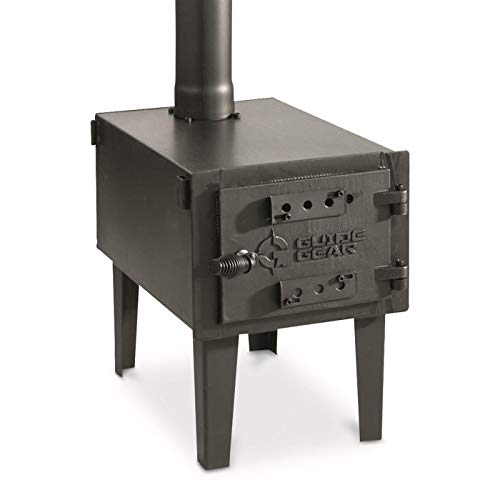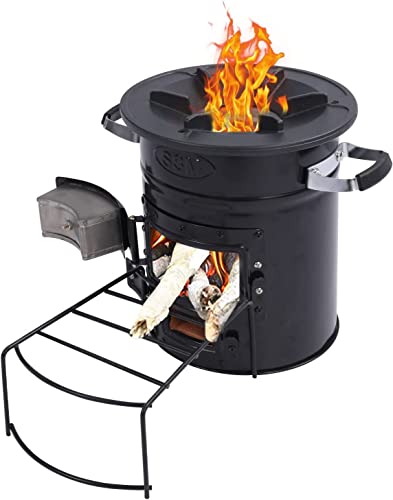근접센서 Wood Stove Burning: The Evolution Of Wood Stove Burning
페이지 정보

본문
 The Advantages of Wood Stove Burning
The Advantages of Wood Stove BurningWood stove burning is an ideal source of heat for those who want to keep their home warm and cosy. However, there are certain important things to keep in mind before you start a fire.
All wood stoves require a constant air flow to produce combustion and heat. The flow of air is controlled by dampers on the door of the stove and the flue pipe which leads to the chimney.
Warmth
Stoves are able to heat your home by convection, not central heating, which is pumped into ductwork in order to be distributed throughout the house. They also can provide radiant heat, but this is more chilly than a convection heater since the warmth is being absorbed by a solid surface instead of dispersing into the air. A wood stove burns firewood to produce radiant Classic Warmth that can add a lot of warmth to a space in a relatively short period of time.
The type of wood you use and the way it is seasoned will affect the way your stove performs. Hard woods such as hazel, birch, and hazelnut are slower to burn, yet they produce long-lasting, consistent heat. They are an excellent option for heating homes as they have high energy density. Soft woods such as spruce and fir have lower energy density which means that they burn more quickly and generate higher levels of carbon emissions.
Modern wood-burning stoves often have turn dampers installed in the interior of the pipe leading to the chimney. The dampers are rotatable and can be adjusted to slow down or speed up the release of combustion gasses from the stove, thus controlling the amount of heat that is retained within your home.
It is important to note that a wood stove needs more maintenance than other heating options. You'll need to cut and split the wood before you can burn it. You'll need to replenish your stove when it runs out of fuel, and you'll be required to clean the ash regularly. Also, you must ensure that the stove has a sufficient draft to draw into the air to ignite.
Depending on the zoning regulations in your area, and the way you maintain your stove, you might have to address smoke pollution. Many towns have regulations for zoning to regulate outdoor burning and limit visible smoke and odors, as well as soot. The Department of Environmental Protection (MassDEP) is another organization that has regulations that control outdoor burning equipment and limit the amount of opacity.
Aesthetics
A wood stove provides a distinct aesthetic to your home. The warmth of the flames that lick at the dried wood creates an atmosphere of comfort and warmth. They look stunning in any space and are a great accent to rustic or vintage decor. They are a great option for power outages, as they offer radiant heating.
They are also a great method to save money as well as reduce carbon emissions. Burning locally harvested and seasoned firewood in a modern wood stove can save you money on heating oil. Furthermore, using wood for burning can help promote the active management of forests which benefits wildlife and local communities.
When choosing a wood stove, be sure to consider its energy efficiency. Modern wood stoves ought to be able to attain more than 80% efficiency. This means that they are more efficient in burning and produce less smoke. Find an electric stove that has secondary, heat-retaining glass as well as advanced combustion systems such as catalytic or non-catalytic. It is crucial to keep an appropriate distance between the stove and any combustible materials like curtains or furniture.
Examine the combustion technology of the manufacturer to ensure that it is safe and efficient. Certain stoves are designed to be installed into existing fireplaces while others are freestanding and may be moved if needed. Regardless of which type of stove you pick it is crucial to ensure it has the right safety features, such as an shut-off valve or venting system to prevent combustible gases from entering the home.
The Scan 83-2 wood burner from Danish brand Scan blends seamlessly into any decor. Its minimalist design with its elegantly rounded shape and absence of unnecessary details give it a simple but sophisticated look. This modern wood burning stove has an aluminium handle, moldings, soft-close doors, and a curved panel that allow you to see clearly of the flames. It is available in gray or black, and is suitable for indoor and outdoor use. It is available in various sizes to fit in different spaces and rooms, classic Warmth including large living rooms and contemporary patios.
Cosy atmosphere
Wood stove burning has a cozy atmosphere that can be much warmer than forced air heating. Besides the warmth from the fire itself, there is also radiant heat from the metal body of the stove that warms the room. In addition, the smell of burned wood is pleasing to most people. This atmosphere is a major reason why many prefer to use a wood stove instead of central heating.
To ensure the proper combustion wood heat requires a great amount of care. The majority of newer wood burning stoves near me stoves feature automatic control systems that can monitor the flame and adjust the amount of air required to prevent a poor combustion that releases smoke. However, the operator (that's you) still has a major influence on how the stove is performing. Particularly you can slow down the combustion process by closing too many of the air vents. This will not only reduce the efficiency of the stove, but it will also increase the emission of volatile compounds.
It is important to keep air vents as wide as you can when starting a fire to ensure that the fire has sufficient oxygen. This will prevent a buildup of tar and other residue that can develop on the heat exchange surfaces. To keep the grate clean and the firebox free of ash it's recommended that you make use of a stove ash broom or shovel to remove the ashes.
It is also essential to add the wood slowly and to avoid closing the air vents too quickly, as it could create a vortex that could trap the smoke and other unburned volatile compounds back to the firebox, and eventually into the room. This will reduce combustion efficiency which will cause the fire to burn less fuel and reduce the amount of heat produced.
Using a blowpipe to blow air into the flame is another method to increase combustion and help spread it evenly. It is crucial to remember that blow pipes are risky if not used in a safe manner. If they are used close to the flames, they could cause fires that are difficult to control. This type of equipment should be left to professionals and those who are experienced.
Savings
The burning and classic Warmth purchase of wood is a green alternative to fossil fuels. It is a renewable resource and therefore carbon-neutral. A majority of wood stoves have back boilers, which allows the waste gases to be used to provide heat to your home and decrease energy costs.
Modern stoves are more efficient when it comes to heating your home. They are efficient in combustion, and emit fewer emissions. They are also smaller, compact and more efficient than fireplaces. This means they are able to project more warmth into the room and less heat is lost through the chimney.
Many manufacturers use an amalgamation of innovative design and clever engineering to create more eco-friendly stoves. This is achieved through the addition of features like the firebox insulation, a massive baffle that creates a longer and more efficient gas flow as well as pre-heated combustion air and secondary combustion. This allows for higher temperatures and less pollution.
A high-quality wood stove is SIA Ecodesign compliant, and will have passed stringent tests to ensure they emit very low levels of pollution. This is vital, since the EPA has set strict limits for the amount of pollution the wood burner is able to emit. The SIA Ecodesign certification is a mark of a stove which meets the requirements.
If you have a good garden and can collect locally grown, untreated, sustainable logs, then a wood stove will help you reduce your carbon footprint while also saving energy costs on heating. Locally harvested wood supports local woodlands, and encourages active land management. This can have a positive impact on wildlife.
You can also construct your own wood burning stove. This will save you money. It is possible because of the availability of scraps as well as reclaimed wood and DIY kits that can help you build it yourself. You can select between non-catalytic or catalytic wood burning stoves. The former is more affordable and more user-friendly, while the latter is more expensive but is more efficient in decreasing emissions.

- 이전글7 Tips To Make The Most Of Your Small Wood Burner 24.04.28
- 다음글7 Things You Never Knew About Wood Burning Stove Near Me 24.04.28
댓글목록
등록된 댓글이 없습니다.
